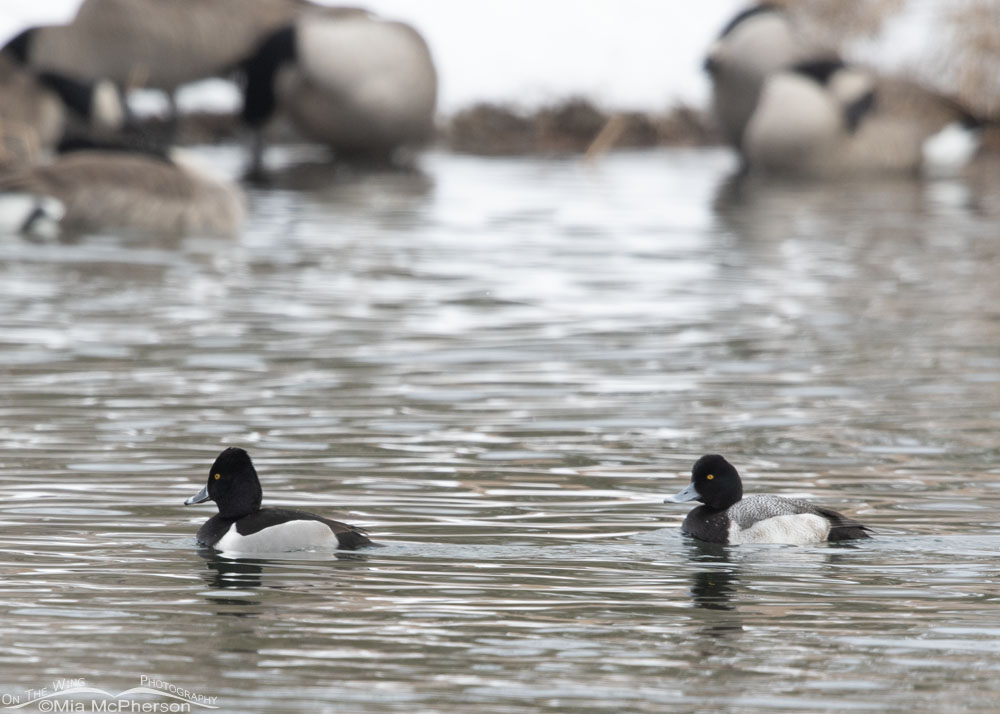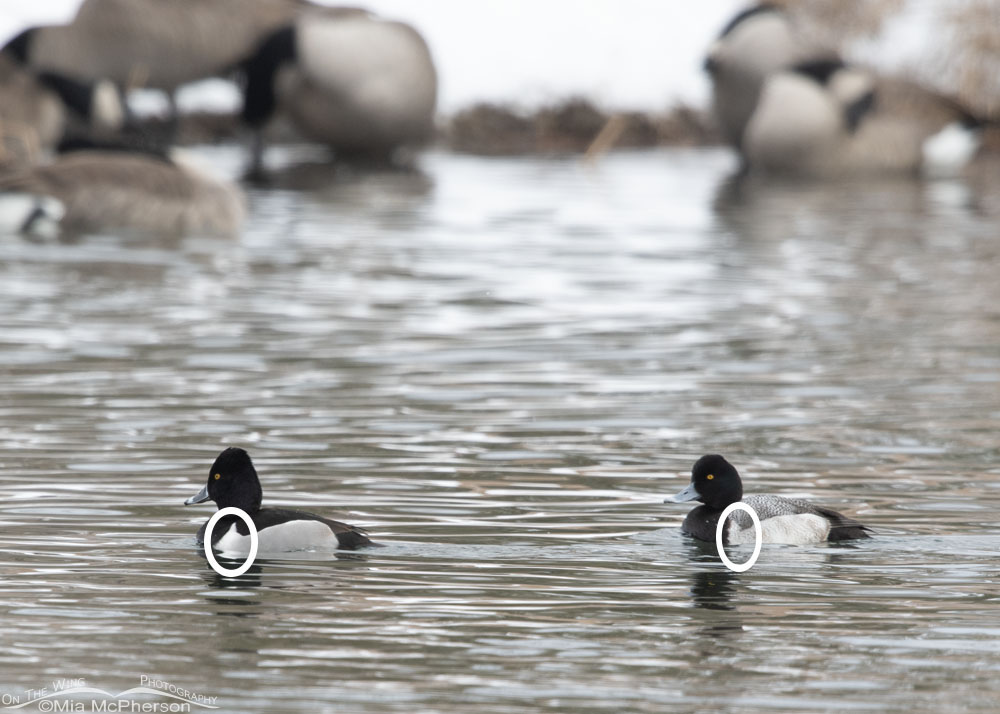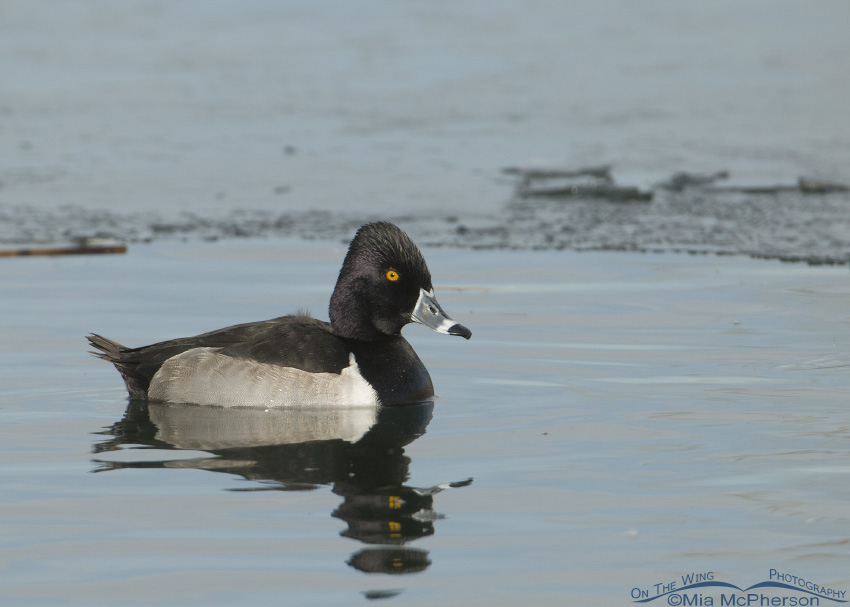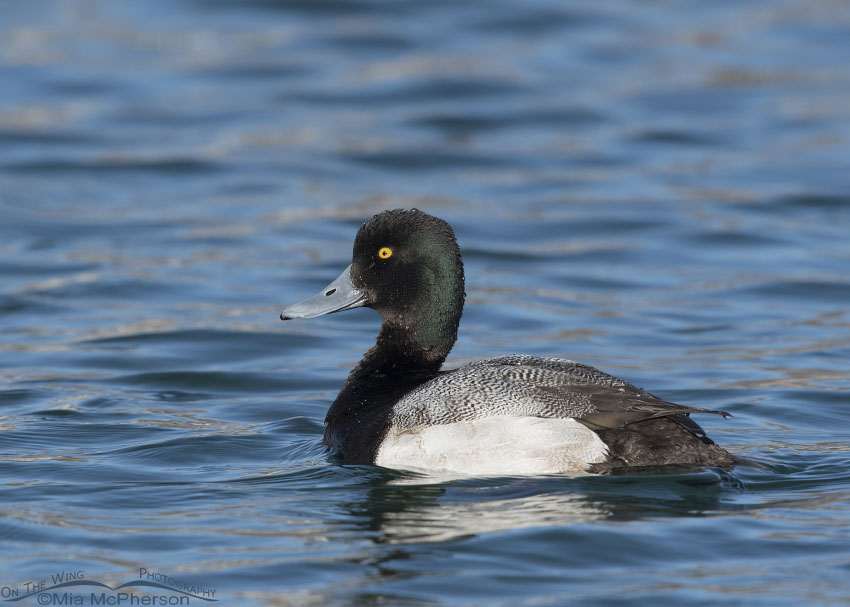Seven days ago I found a Ring-necked Duck and an odd Lesser Scaup drake at my local pond. The scaup puzzled me and I wondered if he might be a hybrid.
 Ring-necked Duck and an odd Lesser Scaup
Ring-necked Duck and an odd Lesser Scaup
Even though these drake diving ducks were a long way off, and the light was awful that day, I took quite a few images of them because I wanted some documentary photos. This image will not end up in my photo galleries; the quality of it is just that poor.
If you are wondering why I thought the scaup might be a hybrid, it is because of a key identification feature that Ring-necked Ducks have that Lesser Scaups usually don’t.
That feature?
It is a distinctive triangular white wedge, or spur, extending upward in the area in front of the folded wing of Ring-necked Duck drakes. That spur can be seen from long distances.
 Ring-necked Duck and Lesser Scaup with spurs circled
Ring-necked Duck and Lesser Scaup with spurs circled
Because I had personally never seen a hybrid Ring-necked x Lesser Scaup, I shared this image with the American Birding Association’s (ABA) “What’s This Bird” Facebook group, where I am a member. It is a terrific, informative group for bird identification by the admins and group members.
One of the members asked what the spur was that I mentioned in my query so I edited the photo to show the spurs on both ducks and shared it with the group.
The consensus in the group was that the Lesser Scaup wasn’t a hybrid, that it was a Lesser Scaup. It might have been the posture of the scaup that caused the light colored “spur” to show like it did when I observed and photographed the bird.
My Bird Identification Skills
 Ring-necked Duck on pastel water & ice
Ring-necked Duck on pastel water & ice
 Lesser Scaup drake floating on a pond
Lesser Scaup drake floating on a pond
Life is good.
Mia
Click here to see more of my Ring-necked Duck photos plus facts and information about this species. Click here to see more of my Lesser Scaup photos plus facts and information about this species.


Extraordinary pics to go along with your wonderful narrative. Thanks Mia.
A few days ago I saw a small, sharp-beaked bird at my feeder that I have not seen before. I took a few pictures and have since seen at least 2 pairs and have IDd them as Red-breasted Nuthatches. Are they common in this area? Skittish like the Chickadees and they too take only 1 sunflower seed at a time and then return for another. Fun to watch but bullied by the House Finches and the Lesser Goldfinches.
Larry, Red-breasted Nuthatches are fairly common in Utah. During the spring/summer/fall I find them most often in the mountains. During the winter I see them at lower elevations including at my feeders. I adore their calls, they simply make me smile.
Thanks, Mia.
I love your observant eye, you catch things others miss.
Thank you. I am always grateful to learn things.